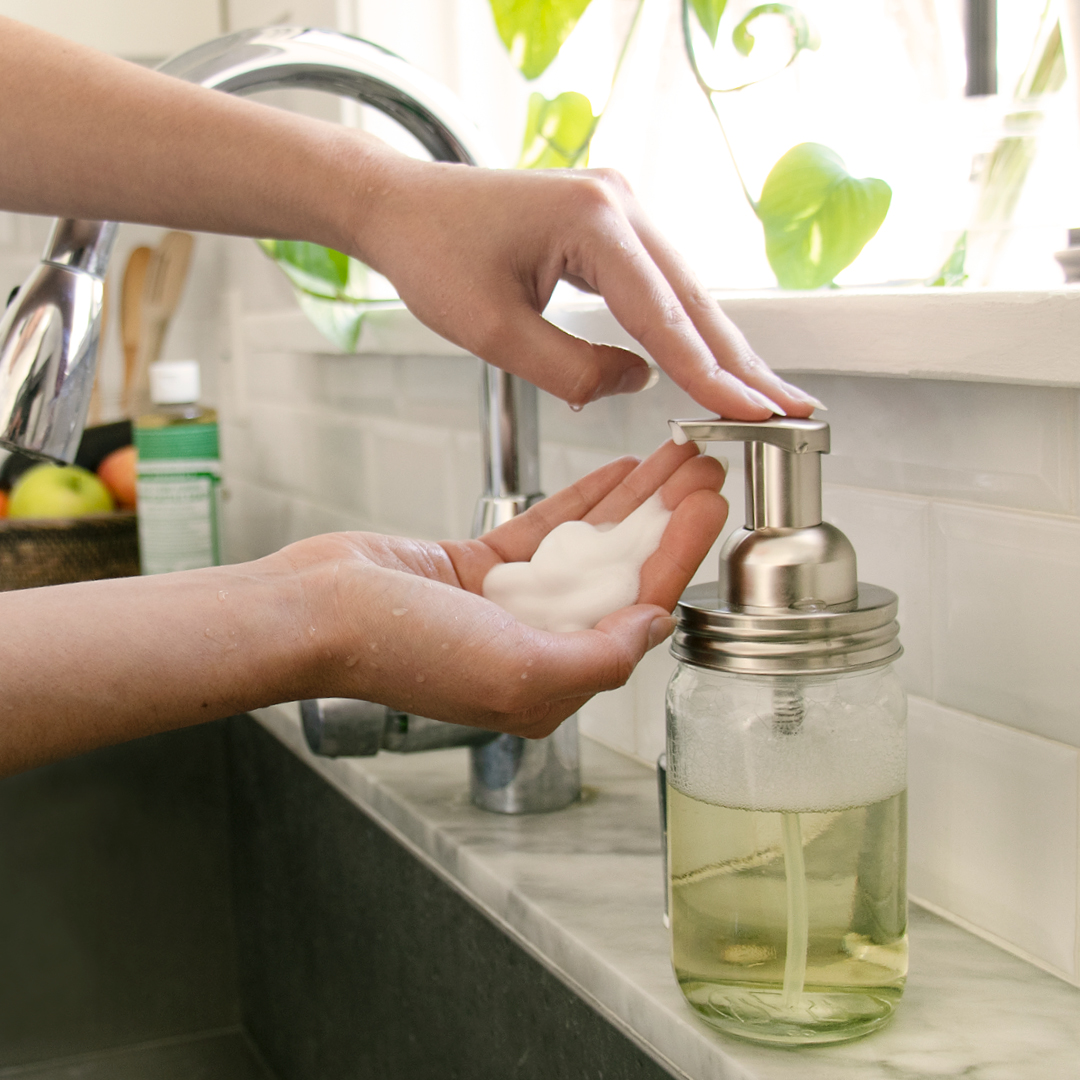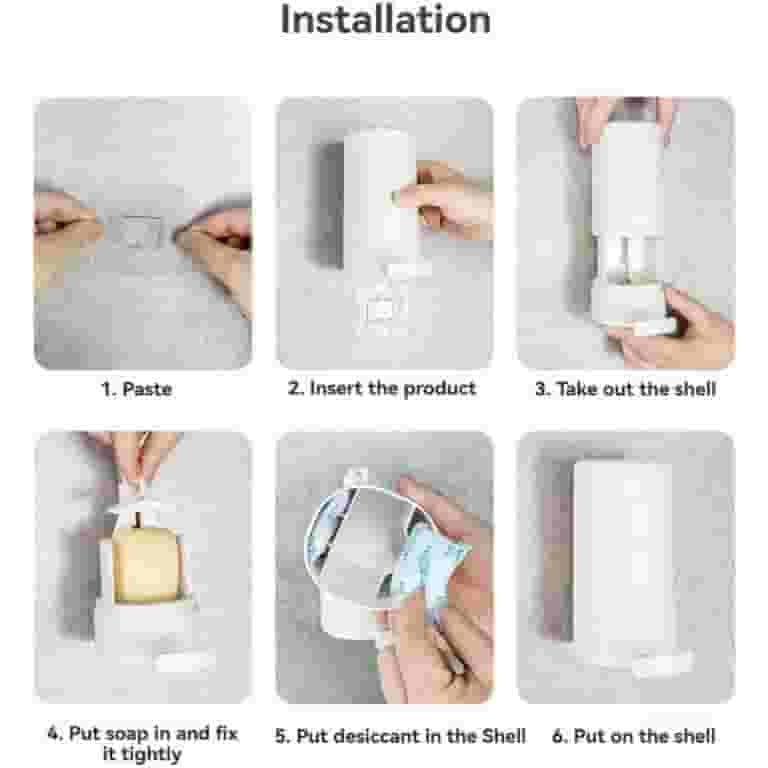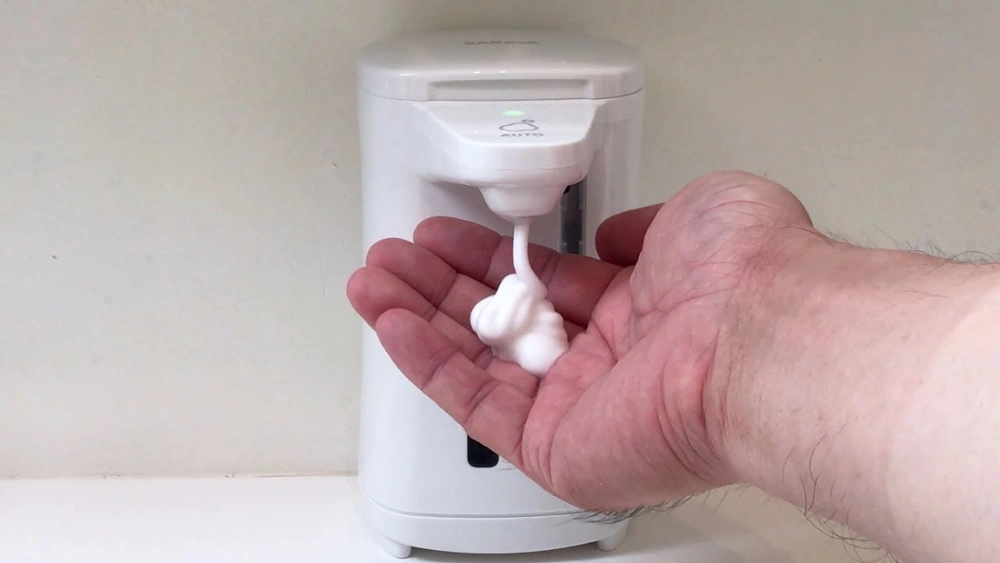Is your foam soap dispenser not working like it used to? It’s frustrating when you press the pump and nothing comes out, or the foam is weak and watery.
But before you toss it away or buy a new one, there’s good news: you can fix it yourself. In this guide, you’ll discover simple, step-by-step solutions to get your foam soap dispenser working smoothly again. Keep reading, and by the end, you’ll feel confident tackling the problem and saving time and money.
Let’s get your dispenser back to perfect foam in no time!
Credit: www.tiktok.com
Common Foam Soap Dispenser Issues
Foam soap dispensers often face common issues that stop them from working well. These problems can cause frustration during daily use. Understanding these common faults helps fix the dispenser fast and keep it running smoothly.
Dispenser Not Pumping
The dispenser may stop pumping soap due to air trapped inside the pump. Sometimes, the spring mechanism can get stuck or broken. Soap buildup around the pump can also block movement. Check the pump for blockage and clean it carefully. Press the pump a few times to remove trapped air.
Weak Foam Output
Weak foam usually happens when the soap is too thin or diluted. The dispenser may mix air and soap incorrectly. Low battery power in electric models can reduce foam strength. Use the right soap formula and avoid over-diluting. Replace batteries if needed and clean the foam mixer inside.
Soap Leakage
Soap leaking from the dispenser often comes from a loose or damaged seal. Overfilling the soap container can cause spills. Cracks in the container or nozzle also lead to leaks. Tighten all parts and check seals for damage. Replace cracked containers or parts to stop leaks.
Clogged Nozzle
The nozzle can clog if soap dries inside it. Dried soap blocks foam from coming out. Regular cleaning prevents buildup. Remove the nozzle and soak it in warm water to clear clogs. Use a soft brush to clean the inside gently.

Credit: www.lisabronner.com
Tools And Materials Needed
Fixing a foam soap dispenser requires gathering the right tools and materials before you start. Having everything ready saves time and reduces frustration. It also helps you avoid interruptions while working on your dispenser.
Basic Cleaning Supplies
Start with simple cleaning items like warm water, mild dish soap, and a soft cloth or sponge. These help remove soap residue and dirt that often clog the pump. A small brush, like an old toothbrush, is perfect for scrubbing tight spots.
Don’t forget a bowl or container to soak removable parts in warm soapy water. This softens hardened soap and makes it easier to clear blockages. Paper towels or a clean rag come in handy for drying components thoroughly.
Replacement Parts
Sometimes, cleaning isn’t enough. You may need new parts such as a replacement pump or nozzle. Check the dispenser’s brand and model to find compatible pieces online or at local hardware stores.
Having spare O-rings or seals is smart because these small parts wear out and cause leaks. Carrying a few options means you won’t have to pause your repair if a piece breaks. Do you know where your dispenser’s manufacturer keeps its parts catalog?
Lubricants And Sealants
Lubricants like silicone grease can keep the pump mechanism working smoothly. Avoid oil-based lubricants as they might damage plastic parts. Applying a small amount to moving joints reduces friction and extends the dispenser’s life.
Sealants, such as waterproof silicone, can fix leaks around seals or cracks. Use them sparingly and allow full drying time before testing the dispenser again. Have you ever tried lubricating a pump and noticed an immediate improvement?
Step-by-step Fixes
Fixing a foam soap dispenser doesn’t have to be a headache. You can often get it working again with a few simple actions. Here’s how to tackle common issues step-by-step and bring your dispenser back to life.
Clearing Clogs
Soap residue can block the nozzle or pump, stopping the foam from coming out. Start by removing the dispenser top and rinsing the pump with warm water. Use a thin brush or toothpick to gently clear any soap buildup inside the nozzle.
Have you noticed your soap turning thick or separating? That can cause clogs too. In that case, flushing the pump with a mix of warm water and a little vinegar helps break down dried soap.
Adjusting The Pump Mechanism
If pressing the pump feels stiff or it doesn’t spring back, the mechanism might be misaligned. Take off the pump head and check if the spring is out of place or compressed.
Sometimes, just loosening the pump by turning it slightly counterclockwise can improve movement. If the spring is damaged, replacing it with a similar size spring from a hardware store can save your dispenser.
Refilling Soap Properly
Using the right soap formula is crucial. Foam dispensers need soap diluted with water, usually a 1:3 ratio of soap to water works well. Pouring undiluted liquid soap can clog the pump quickly.
When refilling, avoid overfilling the container. Leave some air space for the pump to work correctly and prevent leaks. Do you check the soap consistency before refilling? It can save you time and frustration.
Sealing Leaks
Leaks often happen around the pump head or bottle threads. Inspect these areas closely for cracks or loose fittings. Tighten the pump head securely to prevent soap from escaping.
If you spot cracks, a waterproof adhesive or silicone sealant can fix small leaks. Just apply a thin layer, let it dry completely, and test the dispenser again. Preventing leaks keeps your soap mess-free and your dispenser efficient.
Preventive Tips For Longevity
Taking care of your foam soap dispenser helps it work well for a long time. Small steps can stop common problems. These tips save time and avoid frequent repairs. Follow simple habits to keep your dispenser clean and smooth.
Regular Cleaning Routine
Clean the dispenser every week to avoid clogging. Use warm water and mild soap to rinse the pump and bottle. Remove soap residue that blocks the nozzle. Wipe the exterior with a soft cloth to keep it neat. Clean parts dry before reassembling to stop mold growth.
Using Compatible Soaps
Choose soaps made for foam dispensers only. Thick or gel soaps can clog the pump easily. Thin, foaming soaps mix well with air inside the dispenser. Check the label to confirm soap compatibility. Using the right soap keeps the dispenser working smoothly.
Proper Storage Practices
Place the dispenser in a dry, cool place away from sunlight. Heat and moisture can damage the pump mechanism. Avoid storing near sinks where water splashes often. Keep the dispenser upright to prevent leaks. Close the lid tightly after refilling to stop soap from drying out.
When To Replace Your Dispenser
Foam soap dispensers are convenient and easy to use, but they don’t last forever. Knowing when to replace your dispenser is crucial to maintaining hygiene and efficiency in your space. You might wonder whether it’s worth fixing the dispenser or just buying a new one. Let’s delve into the signs of irreparable damage and weigh the cost versus repair considerations.
Signs Of Irreparable Damage
Sometimes, despite your best efforts, the foam soap dispenser just won’t work as it should. Cracks in the casing or broken internal mechanisms are often beyond repair. If the pump is consistently stuck or fails to dispense soap even after cleaning, it might be time to let go.
Another indicator is persistent leaking. If your dispenser leaks soap, it can be messy and wasteful. Regular cleaning might not fix this issue, especially if the seals are worn out. Consider whether these signs are affecting your daily routine.
Cost Vs. Repair Considerations
When deciding whether to repair or replace, it’s essential to consider the cost of repairs versus purchasing a new dispenser. If the repairs are more expensive or close to the cost of a new one, replacement might be the better option.
Look at the age and model of your current dispenser. Older models might not have replacement parts readily available, making repairs more complicated and costly. Newer models often come with updated technology that can be more efficient and durable.
Ask yourself: Is it worth spending time and money on repairs, or would investing in a new dispenser save you hassle in the long run?

Credit: www.walmart.com
Frequently Asked Questions
Why Is My Foam Soap Dispenser Not Dispensing Foam?
A foam soap dispenser may stop dispensing foam due to clogged nozzles or low soap levels. Cleaning the nozzle and refilling with the correct foam soap can fix this issue quickly.
How Do I Unclog A Foam Soap Dispenser Nozzle?
To unclog, soak the nozzle in warm water for 10 minutes. Use a thin brush or pin to clear any residue gently.
Can Using Regular Soap Damage A Foam Soap Dispenser?
Yes, regular soap is too thick for foam dispensers. It can clog pumps and reduce dispenser lifespan. Always use soap designed for foam dispensers.
How Often Should I Clean My Foam Soap Dispenser?
Clean your foam soap dispenser every two weeks. Regular cleaning prevents soap buildup and ensures smooth operation.
Conclusion
Fixing a foam soap dispenser is easier than it seems. Check the pump and clean any blockages. Use the right soap for the dispenser to work well. Regular care helps keep it running smoothly. Small steps save money and reduce waste.
Try these tips to enjoy a working dispenser again. Simple fixes can make a big difference every day. Keep your soap dispenser ready for use with little effort.

